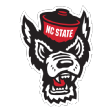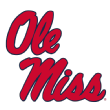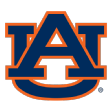A year removed from one of the deepest quarterback classes in recent draft history, the 2019 NFL draft lacks established high-end talent at the position, and there are questions at the top.
Oregon's Justin Herbert has the best combination of NFL-level production and overall skill set, but the junior could still return to Eugene next season. If that is the case, it's a wide-open race to find the top signal-caller to come off the board, as the class is filled with signal-callers who appear to be lacking in at least one significant area.
Let's rank the top 10 draft-eligible quarterbacks right now, using Pro Football Focus' grades as well as what we know about how the NFL evaluates prospects.
First round

1. Justin Herbert, Oregon
Junior | 6-foot-6, 233 pounds | 23 career starts
2018 stats through Nov. 1: 155-of-260 passing (59.6 percent) for 2,069 yards, with 20 TDs, 6 INTs; 2 rushing TDs; 77.4 Total QBR (No. 20 in FBS)
PFF grade: 80.8
Herbert has everything scouts will be looking for, from his 6-6 frame to his strong arm to his impressive athleticism. He can drive the ball accurately up the seam, and he has been accurate throwing down the field, as he is tied for ninth in the nation in big-time throw percentage at 6.5 (big-time throws are PFF's highest-graded throws as timing, accuracy and level of difficulty separate them from regular throws).
While Herbert appears to be the best option in a weak crop, he has struggled at times this season, particularly on the road last week against Arizona. Plus, Herbert might prefer to play one more season at Oregon, and that looming decision could make a questionable group even weaker.
Day 2

2. Will Grier, West Virginia
Senior | 6-2, 223 | 23 career starts
2018 stats through Nov. 1: 154-of-219 passing (70.3 percent) for 2,272 yards, with 25 TDs, 7 INTs; 1 rushing TD; 83.0 Total QBR (No. 6 in FBS)
PFF grade: 91.8
There's a lot to like about Grier's game as he's been one of the better downfield passers in the country over the past two seasons, and he has the top grade this year at the all-important intermediate (10-19 yard) range at 92.7. The concern for Grier has been multiple subpar outings this year, particularly against Kansas and Iowa State, and there were similar duds last season despite him posting strong, identical grades of 91.1 both last year and this year. Grier is not the most physically talented quarterback in the class, but he's efficient in the right areas, and he's been excellent when throwing from a clean pocket, one of the most stable metrics for next-level success.

3. Dwayne Haskins, Ohio State
Sophomore | 6-3, 220 | 8 career starts
2018 stats through Nov. 1: 224-of-315 passing (71.1 percent) for 2,801 yards, with 30 TDs, 5 INTs; 1 rushing TD; 83.9 Total QBR (No. 5 in FBS)
PFF grade: 81.7
Haskins has emerged as a top prospect this year as he's taken Ohio State's passing game to new heights. He has a strong arm and a natural passing ability that the Buckeyes haven't had in years, though like the others on the list, there are a few red flags that must be sorted out. Haskins has seen a significant drop-off in performance in his biggest games, on the road against Penn State and Purdue. While Ohio State pulled off the win against Penn State, Haskins picked up 235 of his 270 yards after the catch on his way to his worst grade of the season at 44.1 overall. Purdue was better, as he finished at 63.4 overall in Ohio State's loss. As important as clean-pocket success is for the next level, Haskins has had a major drop-off when facing pressure (PFF grade of 91.2 when clean, 38.3 when under pressure) and it's a big question that still needs answering as he's only eight starts into his college career.
QB Dwayne Haskins sends a long pass downfield to Terry McLaurin for Ohio State's first touchdown of the game.

4. K.J. Costello, Stanford
Third-year sophomore | 6-5, 215 | 15 career starts
2018 stats through Nov. 1: 170-of-254 passing (66.9 percent) for 2,165 yards, with 17 TDs, 6 INTs; 80.0 Total QBR (No. 11 in FBS)
PFF grade: 84.3
Costello is still flying under the radar, but as a redshirt sophomore, there's no guarantee that he'll be in this draft class. He's a name to watch for the future, however, as he's developed nicely in Stanford's system and he's currently grading at 84.3 overall on the year. Costello could stand to improve his throw-for-throw accuracy, and his 83.7 grade from a clean pocket is below others in the class, but he's handled pressure well with a 75.9 grade and 9.0 yards per attempt this season. If Costello comes out this year, he's one of the more intriguing prospects and he could be a Day 1 option if he waits until the 2020 draft.
Day 3/undrafted

5. Daniel Jones, Duke
Junior| 6-5, 220 | 31 career starts
2018 stats through Nov. 1: 118-of-183 passing (64.5 percent) for 1,457 yards, with 13 TDs, 4 INTs; 1 rushing TD; 69.7 Total QBR (No. 39 in FBS)
PFF grade: 87.3
The most improved quarterback on the list, Jones went from intriguing, toolsy projection to viable prospect this season. At 6-foot-5, 220 pounds with an NFL arm, scouts have been keeping an eye on Jones' development. However, PFF grades of 65.7 in 2016 and 61.8 in 2017 were not encouraging. However, he's grading at 87.3 overall this season while firing the fifth-lowest percentage of negatively graded passes in the nation. Jones can get the ball down the field as his adjusted completion percentage of 54.5 on deep passes ranks 17th in the nation, but the questions remain if this is just a strong six-game stretch or a sign of his natural progression. Jones is still a developmental prospect at this stage.

6. Drew Lock, Missouri
Senior | 6-4, 225 | 41 career starts
2018 stats through Nov. 1: 169-of-279 passing (60.6 percent) for 2,144 yards, with 16 TDs, 6 INTs; 3 rushing TDs; 76.1 Total QBR (No. 27 in FBS)
PFF grade: 81.4
The first-round hype has been present for Lock for a few years now, and there's still a strong chance that he ends up there come April, but his on-field performance is not at that level just yet. Lock will win the eye-test contest with his measurables to go with one of the best arms in the country when it comes to pure velocity. On the positive side, Lock has improved each year in PFF grading terms, from a rough 43.7 as a freshman to 67.8 in 2016, 81.8 last year, and now an 85.3 overall grade here in 2018. His deep passing has been excellent, as he ranks third in the nation with an adjusted completion percentage of 65.7 on deep (20-plus-yard) passes, however, it's the rest of Lock's game that raises concerns. He's slow to process in Missouri's QB-friendly scheme, and his accuracy is lacking when compared to other top-end quarterback prospects. The other concern is the drop-off in performance in SEC play this season. Still, someone will still fall in love with Lock, and we're not completely ready to give up on him, but there's too much projection to his game at this point.

7. Ryan Finley, NC State
Senior | 6-4, 212 pounds | 35 career starts
2018 stats through Nov. 1: 177-of-265 passing (66.8 percent) for 2,250 yards, with 13 TDs, 6 INTs; 84.5 Total QBR (No. 4 in FBS)
PFF grade: 90.7
Another prospect where competition level may have exposed his flaws, Finley has continued to produce at a high level over the past few years, but his lack of arm strength is a glaring issue in games against Clemson and Notre Dame during his career. Finley posted solid grades of 89.3 last year and 90.7 this season, but his 53.0 grade against Clemson sticks out, as he simply couldn't get anything going down the field. Finley's skill set fits best as a developmental backup.

8. Jordan Ta'amu, Ole Miss
Senior | 6-2, 210 | 13 career starts
2018 stats through Nov. 1: 173-of-268 passing (64.6 percent) for 2,622 yards, with 16 TDs, 5 INTs; 4 rushing TDs; 78.7 Total QBR (No. 14 in FBS)
PFF grade: 86.4
Perhaps a surprising name on the list, but Ta'amu continues to excel in Ole Miss' offense. Yes, he's surrounded by excellent wide receiver talent, but he's grading at 90.2 from a clean pocket, and his throw-for-throw accuracy percentage is second best in the nation. Ta'amu's worst game came against Alabama (50.3 grade), and that's a concern against high-end competition, but a 92.1 grade on 10-plus-yard throws puts him in the developmental category and potential late-round pick.
Jordan Ta'amu throws down the sideline to D.K. Metcalf for a 75-yard touchdown and early Ole Miss lead.

9. Jarrett Stidham, Auburn
Junior | 6-3, 215 | 25 career starts
2018 stats through Nov. 1: 142-of-235 passing (60.4 percent) for 1,714 yards, with 8 TDs, 4 INTs; 2 rushing TDs; 53.8 Total QBR (No. 78 in FBS)
PFF grade: 63.0
Expectations were sky-high for Stidham coming into the season, but his development has been stalled for a while now after a promising true freshman season in 2015 at Baylor. He has NFL velocity, but his ability to process in the pocket must improve in order to live up to his potential. Stidham's 63.0 overall grade this season continues a disappointing trend that has seen him drop from 89.3 in 2015 to 71.5 last year to his career low here in 2018.

10. Brett Rypien, Boise State
Senior | 6-2, 202 | 44 career starts
2018 stats through Nov. 1: 199-of-293 passing (67.9 percent) for 2,565 yards, with 23 TDs, 5 INTs; 77.0 Total QBR (No. 22 in FBS)
PFF grade: 89.4
With three-plus years of strong production under his belt, Rypien has put himself into position to become a late-round option. His 89.4 overall grade currently ranks 10th in the nation after posting strong grades between 78.5 and 84.8 in each of the past three seasons. Like others on the list, he's lacking the physical tools, but he's a good decision-maker and he's had a dominant season throwing down the field. Rypien's 18 touchdowns on deep passes are six more than the next closest quarterback, and his 898 deep passing yards rank second. Rypien is another potential backup at the next level.
